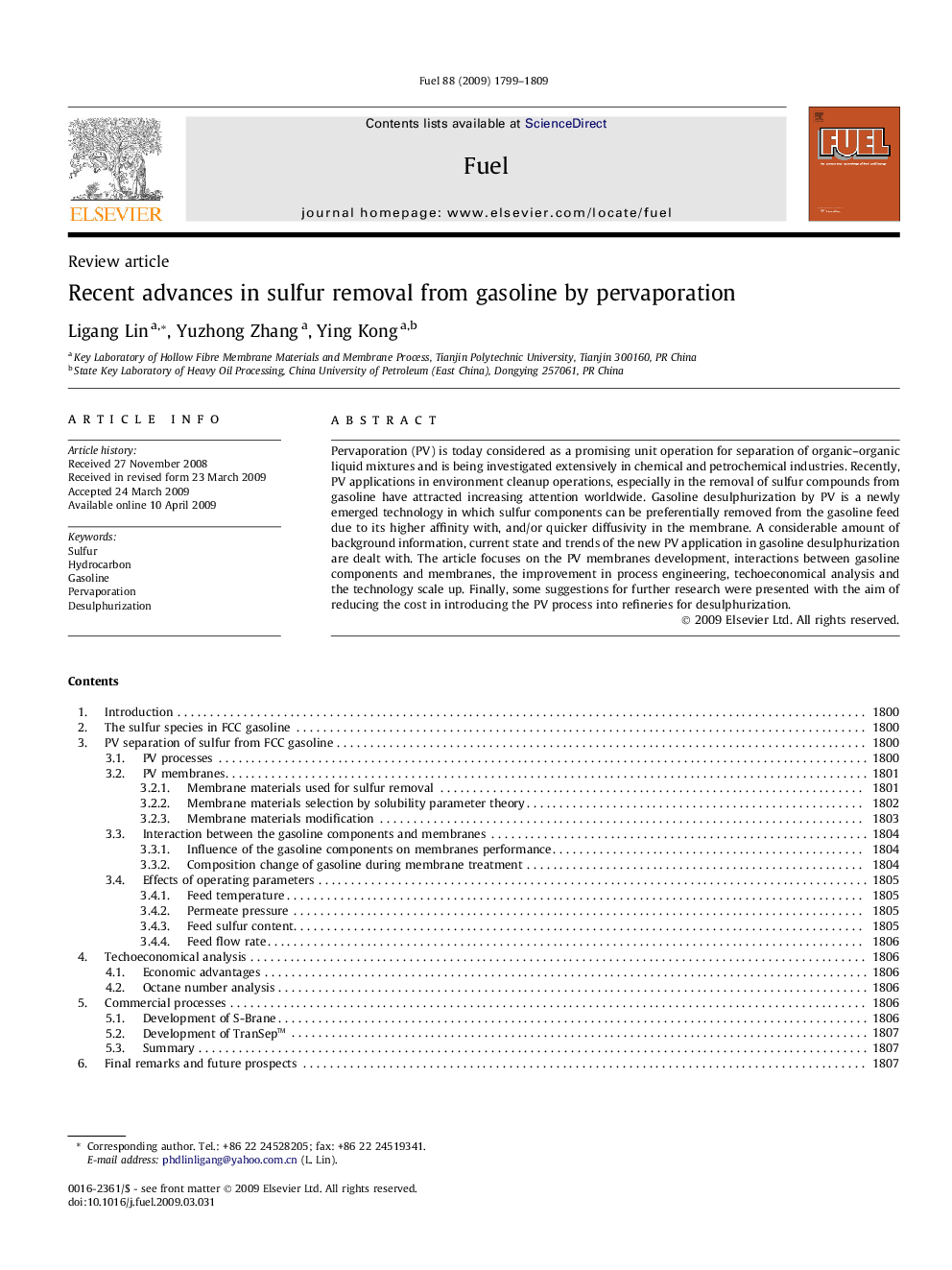| Article ID | Journal | Published Year | Pages | File Type |
|---|---|---|---|---|
| 206890 | Fuel | 2009 | 11 Pages |
Pervaporation (PV) is today considered as a promising unit operation for separation of organic–organic liquid mixtures and is being investigated extensively in chemical and petrochemical industries. Recently, PV applications in environment cleanup operations, especially in the removal of sulfur compounds from gasoline have attracted increasing attention worldwide. Gasoline desulphurization by PV is a newly emerged technology in which sulfur components can be preferentially removed from the gasoline feed due to its higher affinity with, and/or quicker diffusivity in the membrane. A considerable amount of background information, current state and trends of the new PV application in gasoline desulphurization are dealt with. The article focuses on the PV membranes development, interactions between gasoline components and membranes, the improvement in process engineering, techoeconomical analysis and the technology scale up. Finally, some suggestions for further research were presented with the aim of reducing the cost in introducing the PV process into refineries for desulphurization.
